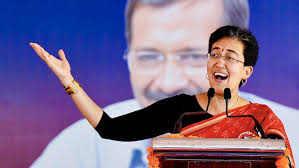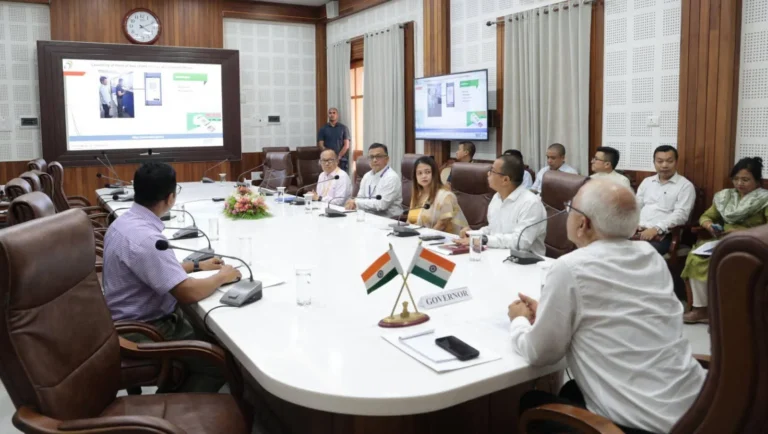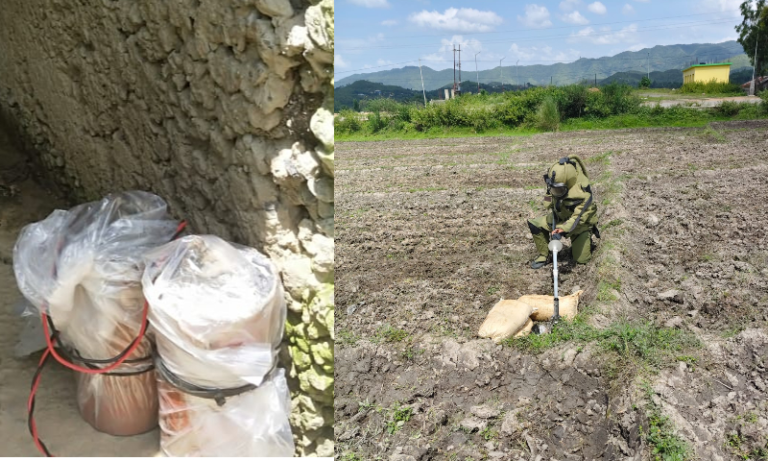Atishi Marlena Sworn in as Delhi Chief Minister: A New Era for the Capital
Delhi has witnessed another significant shift in its political landscape as Atishi Marlena, a key leader of the Aam Aadmi Party (AAP), was officially sworn in as the Chief Minister of Delhi. Known for her sharp intellect, dedication to public service, and unwavering commitment to education reforms, Atishi’s rise to this position marks a turning point for the governance of the nation’s capital.
This article delves into the importance of her appointment, her past contributions, and what Delhiites can expect under her leadership. Whether you’re a resident of Delhi or just curious about the political scene, there’s a lot to unpack.
A Brief Overview of Atishi Marlena’s Political Journey
Atishi Marlena is no stranger to the political scene in Delhi. An integral part of AAP, her political journey has been both inspiring and impactful. Before taking up the mantle of Chief Minister, Atishi was known for her work in revolutionizing Delhi’s education system.
Her academic background is impressive, having studied at Oxford University, and she has been instrumental in making significant changes to the public school system in Delhi. As an advisor to the education minister and later an MLA (Member of the Legislative Assembly), Atishi implemented innovative programs that boosted the standard of education in Delhi government schools.
But what sets Atishi apart is her ability to communicate effectively with the masses while making policy changes that work. Now, with her swearing-in as Chief Minister, there’s much anticipation about how she will carry forward her previous success to address the broader issues of governance.
In-Depth Analysis: What Atishi Marlena’s Leadership Means for Delhi
Delhi has long been a focal point of Indian politics. As the capital, it represents the heart of the nation, and whoever leads the government has the enormous responsibility of maintaining balance, development, and progress. Atishi’s appointment has raised several questions about what her leadership will bring, and this long-form analysis aims to address these concerns.
1. Education Reforms: A Top Priority
It’s no secret that Atishi’s claim to fame within AAP comes from her work in the education sector. She spearheaded the transformation of government schools in Delhi, making them a model for the rest of the country. Under her leadership, Delhi’s public schools underwent extensive overhauls, from improving infrastructure to teacher training and curriculum updates.
So, what can we expect now that she’s leading Delhi as Chief Minister?
Atishi is likely to continue focusing on education, but with a more comprehensive approach. As Chief Minister, she’ll have the resources and authority to expand her reforms beyond schools, tackling issues such as higher education, vocational training, and digital literacy for underprivileged sections of society.
One might wonder how she plans to finance these large-scale reforms. Given her track record, it’s expected that Atishi will push for more budget allocations toward education. She could also explore public-private partnerships to ensure better resources for students.
2. Public Health and Social Welfare Initiatives
With the global pandemic having laid bare the weaknesses in public health infrastructure, Atishi’s leadership could play a pivotal role in strengthening Delhi’s healthcare system. One of the pressing challenges in the city is improving public hospitals, ensuring affordable healthcare, and addressing air quality issues that affect the health of millions of citizens.
Atishi’s background in policy-making, combined with her reputation for results-oriented governance, suggests that she will push for innovative healthcare reforms. Think along the lines of universal healthcare access, improvements in sanitation, and addressing healthcare equity in marginalized communities.
Additionally, with Atishi at the helm, social welfare programs such as free water, electricity subsidies, and women’s safety could be expanded. Given her strong commitment to progressive policies, Delhi’s underprivileged sectors are likely to see significant gains.
3. Environment and Sustainability: Can Atishi Tackle Delhi’s Pollution Problem?
Delhi has long been grappling with a severe air pollution crisis. The winter months often bring smog and dangerous levels of air quality, raising concerns about the city’s environmental sustainability. As Chief Minister, Atishi will be tasked with addressing this urgent issue.
Her approach may involve a multifaceted strategy, combining stricter regulations on industrial pollution, promoting green energy initiatives, and enhancing public transportation to reduce vehicular emissions. Additionally, campaigns to plant more trees and create awareness about sustainability could be at the top of her agenda. It’s a challenge for sure, but Atishi has shown she’s capable of handling tough tasks.
A clean and green Delhi might not be an overnight achievement, but her focus on incremental, meaningful policies could lead to long-term improvements.
4. Infrastructure and Urban Development
Being one of the fastest-growing urban centers, Delhi faces enormous challenges in infrastructure. Overcrowded roads, congested public transportation, and inadequate housing for millions are just a few of the pressing issues.
Atishi’s government will need to tackle infrastructure with a fresh perspective. This could mean expanding metro lines, modernizing bus systems, and improving last-mile connectivity across Delhi. Smart city initiatives could also be on her radar, with a focus on digital infrastructure, water management, and housing.
Moreover, the upcoming elections will likely determine how swiftly these infrastructure promises turn into reality. She’ll need to balance development with sustainability—ensuring that new projects don’t exacerbate Delhi’s already dire pollution and congestion issues.
5. Women’s Safety and Empowerment: A Core Focus
Atishi has been an outspoken advocate for women’s rights throughout her career. Her leadership is expected to bring a renewed focus on women’s safety and empowerment in the capital. Under her administration, we may see a rise in women’s representation in government, greater security measures in public spaces, and perhaps initiatives to support women entrepreneurs.
Women’s safety, especially in a city like Delhi, is an emotional topic for many residents. Atishi’s administration may look at bolstering security, improving lighting in public areas, and perhaps rolling out women-specific public services, including transportation and healthcare.
6. Governance and Transparency
Atishi’s rise to Chief Minister is also an opportunity to push for more transparent governance. AAP has consistently campaigned on the promise of eradicating corruption, and Atishi is expected to continue this fight. Her administration is likely to emphasize transparency in financial dealings, public policies, and decision-making.
This might involve creating more accessible platforms for public grievances and using technology to increase accountability in the government.
The Road Ahead: Challenges and Opportunities
Atishi Marlena takes office at a time when Delhi is in desperate need of dynamic leadership. From education to healthcare, and pollution to women’s safety, her administration will have no shortage of challenges to face. However, her strong track record in the areas she has worked on so far gives many hope that positive changes are on the horizon.
The road ahead won’t be easy. With a growing population and increasing demands for resources, she will need to be smart, pragmatic, and innovative in how she approaches governance. But if her previous work is any indication, Atishi Marlena is more than capable of delivering the leadership Delhi needs.
FAQs
1. What is Atishi Marlena’s political background?
Atishi Marlena is a leader of the Aam Aadmi Party (AAP) and has been an MLA in Delhi. She gained recognition for her contributions to Delhi’s education sector and has now been sworn in as the Chief Minister of Delhi.
2. How has Atishi transformed Delhi’s education system?
Atishi played a crucial role in improving Delhi’s public schools by enhancing infrastructure, curriculum, and teacher training. Under her guidance, government schools in Delhi have become a model for other states.
3. What can we expect from Atishi as Chief Minister?
Atishi is expected to focus on continuing her reforms in education while expanding efforts to improve public health, women’s safety, environmental sustainability, and governance transparency.
4. What are Atishi’s views on women’s empowerment?
Atishi has always been a vocal advocate for women’s rights. As Chief Minister, she’s likely to prioritize women’s safety and empowerment through various social initiatives.
5. How does Atishi plan to tackle Delhi’s pollution problem?
Atishi is expected to adopt a multi-pronged strategy that includes stricter environmental regulations, promoting green energy, and enhancing public transportation to reduce emissions.




